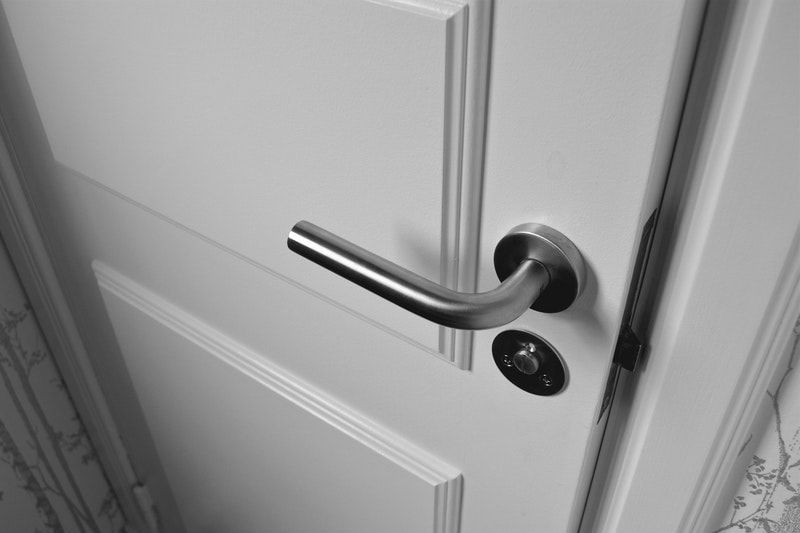Doors and trim can often be overlooked when repainting a room, but they’re essential to completing the crisp, modern look of your dreams. Whether you’re looking to makeover the entire room or just do a little touch up, applying a fresh coat of paint to your doors and the surrounding trim might not be as easy as you think.
Before getting started, you’ll need to know the costs to paint doors and trim, and how choosing to D.I.Y. or hire professionals can have an effect on how much you spend. This article will help you make some important decisions by addressing the following topics:
- Different types of interior doors
- Different types of trim and frames
- Process for painting interior doors and trim
- How much it costs to paint interior doors and trim
- Should I D.I.Y. paint interior doors?
- Should I hire a professional to paint my interior doors?
- Why are estimates so different?
When considering the cost to paint the interior of your house, you should factor in the costs of painting your doors. Before we dive into how much these options will cost you, let’s dive into what types of interior doors and trim are available and how to paint your doors and trim.
Different types of interior doors
You might be surprised to learn that there are four different types of doors you’re likely to see in a home. It’s important to clearly differentiate between types and know what type of doors you have before you begin your project. Below are the kinds of doors you’re likely to have in your home, or are able to choose from.
Flushed doors
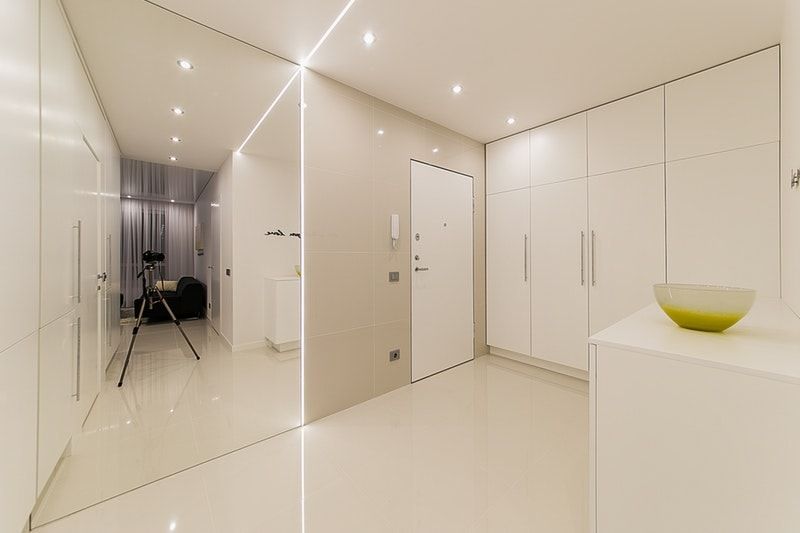
Also known as “flat doors” for their entirely flat surface. These will be the easiest to paint, as there are no panels to worry about painting separately.
Raised panel doors
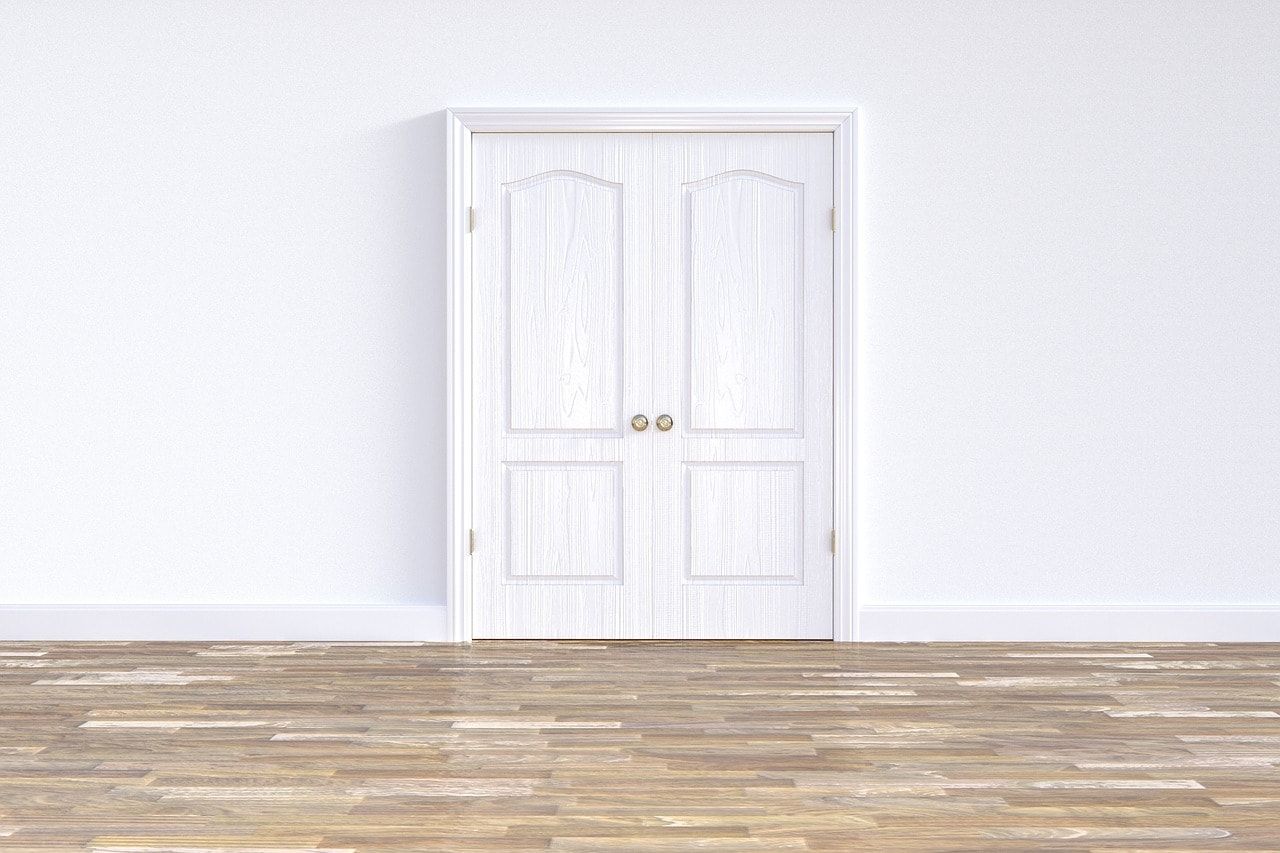
Doors that are made up of multiple pairs of panels. This requires a need for more intricacy when they are being painted in order to avoid a messy-looking final product.
French doors
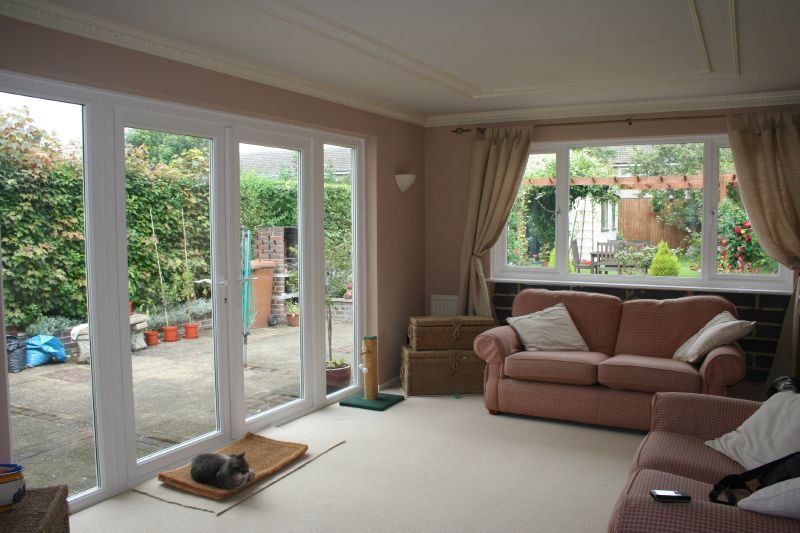
The hardest doors to paint, as they include glass surfaces within the door. Painting these types of doors will require caution and prep work to avoid getting paint on the glass.
Bifold doors

Doors that slide open, designed with panels that open from the centre and fold together. When painting, you will need to be sure to paint the parts of the door that are out of sight when the door is closed.
Different types of trim and frames
Even greater than the variety of doors is the variety of trims. There are many different types of trim you can use to add value to your room, personalizing the look and feel of your doors – and entire space. Here are some of the most popular options.
Baseboard

An affordable and common trim that you’re most likely to find along your floors. If your baseboards remain attached to the wall while painting, you’ll need to take extra caution to avoid getting paint on the floor.
Casing
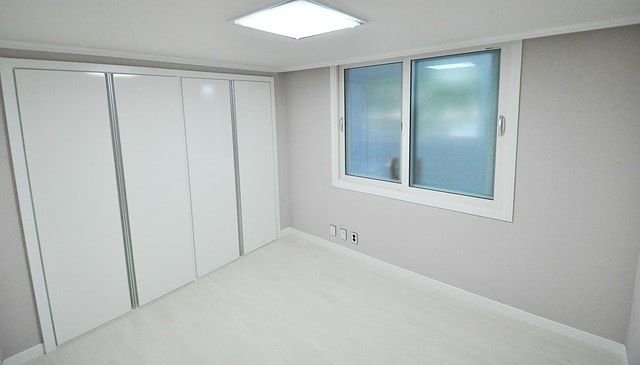
Wooden trim that is often found around windows and door frames. Similar to baseboard, painting your casing will require extra work to avoid getting paint on your windows and doors.
Chair rail

A decorative frame that runs along the wall and close to the floor with the intent of protecting the wall from chairs. If your chair rail is already attached to your walls, use protective measures to ensure that none of the paint you’re using ends up where it shouldn’t.
Crown molding

Trim that runs along the top of the wall to cover up bad drywall work or act as a decorative piece. When painting, be careful to avoid accidentally getting paint on the wall or ceiling.
Picture rail

A frame that is placed higher on the wall with the purpose of supporting hooks and pictures. Make sure to do the proper prep work to avoid getting paint where it doesn’t belong, including on the walls or any of the hooks.
Wall frame molding

A decorative trim used to resemble the shape of a picture frame on the wall. Like with the other types of trim, remember to take precautions in order to avoid getting paint on the walls.
Process for painting interior doors and trim
You might think that painting a room’s doors or trim is as easy as throwing on a coat of paint and leaving it to dry, but that’s often how rooms are left looking rushed and messy. It requires patience and technique to leave a room looking its best. Here are the steps to follow when painting your doors and trim.
General steps for painting interior doors
- Remove the door’s hinges and knob/handle, and then find a safe and comfortable place to work.
- Sand down the door. This will remove the old paint and allow the new paint a better chance at sticking.
- If necessary, make sure to clean the door before you apply anything (this is important when painting exterior doors).
- Apply a coat of primer of your choice to the entire surface of the door. Allow it to dry before you begin painting.
Pro Tip
For help deciding what primer and paint to use, check out this guide.
How to paint flush doors
- If your door is a flush door, begin painting both sides with your paint of choice, using a roller brush.
- Use a regular paint brush to smooth out any blotches or drips and to paint the edges.
- Allow the paint to dry for 24 hours.
- When the paint is dry, reattach the hinges and knobs.
How to paint raised panel doors
- If your door is a raised panel door, begin painting with your paint of choice by starting with the rails (horizontal sections at the top and bottom of the door) and stiles (the vertical outer edges of the door) with a paint brush, making sure to follow the grain of the wood.
- Next, paint each pair of panels from top to bottom.
- Allow the paint to dry for 24 hours.
- When the paint is dry, reattach the hinges and knobs.
How to paint French doors
- If your door is a French door, start by applying tape to the glass surfaces in order to protect them from the paint.
- Use your paint of choice to paint the rails and stiles on both sides of the door using a paint brush.
- Allow the paint to dry for 24 hours.
- When the paint is dry, reattach the hinges and knobs.
How to paint bifold doors
- If your doors are bifold doors, begin painting both sides with your paint of choice, using a roller brush.
- Use a regular paint brush to smooth out any blotches or drips and to paint the edges.
- Allow the paint to dry for 24 hours.
- When the paint is dry, reattach the hinges and knobs and secure back into its track.
Pro Tip
If your bifold doors look similar to the types listed above, make sure to follow the steps for whichever type of door the design is closest to. Note that the cost to paint bifold doors are dependent on how many doors you have and the size of each door.
How to paint exterior doors
- Apply a second coat of primer to the door’s trim and details with a paintbrush.
- Use a paintbrush or a roller to apply at least two coats of exterior paint to the door.
- If necessary, use a paintbrush to smooth out any blotches or drips.
- Allow the paint to dry for 24 hours.
- When the paint is dry, reattach the hinges and knobs.

Steps for painting trim
- Apply caulking to any spaces between the wall and the trim.
- Tape off the wall, floor, and any surfaces you’d like to protect from the paint.
- Apply at least one coat of primer of your choice to the trim to prevent peeling and the wood grain from showing through the paint.
- Apply at least two coats of your paint of choice to the trim.
- Let dry.
How much it costs to paint interior doors and trim

When looking to start any paint project, a lot of the decision making comes down to the costs. Before setting out to paint your doors and/or trim, it’s important to get an idea of just how much you could potentially be spending. Whether it’s a D.I.Y. project or you’re wanting to get a quote from a professional painter, you’re going to need to start by measuring everything that needs painted.
Steps for measuring doors and determining paint needed
- Measure the length of the door (from top edge to bottom edge) with your preferred measuring tool. Record the number.
- Measure the width of the door (from left edge to right edge) with your preferred measuring tool. Record the number.
- Multiply the two measurements together to get the square footage of the baseboard. This is the number you’ll need to calculate the cost.
- Repeat steps for all other doors you wish to have painted.
- To figure out the amount of paint needed, divide the total amount of square footage by 400 (the amount of square feet a one gallon paint can will cover).
Steps for measuring trim and determining paint needed
- Measure the length of the trim (from left to right) with your preferred measuring tool. Record the number.
- Measure the width of the trim (from top to bottom) with your preferred measuring tool. Record the number.
- Multiply the two measurements together to get the square footage of the trim. This is the number you’ll need to calculate the cost.
- Repeat steps for all other baseboards you wish to have painted.
- To figure out the amount of paint needed, divide the total amount of square footage by 400 (the amount of square feet a one gallon paint can will cover).
Average cost to paint interior doors and trim
Now that you know roughly how much is needed to paint your doors and trim, you’ll have an easier time figuring out the costs associated with your paint project. Here are the average costs that you might want to consider when preparing for your project.
- Cost to paint interior door (flush or raised panel door) – $50-$200 per door (including supplies and prep work)
- Cost to paint trim and frames – $50-$150 (including supplies and prep work)
- Labour – $20-$35 per hour per painter, $15-$200 for removal and disposal
Advantages of painting interior doors, trim, and frames at the same time
Given the amount of work and the costs that go into painting your doors and trim, it can be tempting to split the work into two different projects. However, it will likely just cost you more money and effort over time. Here are a few reasons why it’s better to have them both painted at once:
- Freshness of the paint – As your paint gets older, its age will start to show. Painting your doors and trim at the same time will ensure that they perfectly match each other for years to come.
- Cheaper labour costs – If you’re choosing to go the professional painter route, you’ll be spending less money on labour. If you separate the job into two or more projects, you’ll end up paying separate project fees.
- Faster completion time – Setting forth to complete the entire project means that you’ll be rid of the stress much sooner and will be able to enjoy your interior rooms quicker, rather than letting your unfinished work serve as a constant reminder that there’s still work to be done.
Cost to paint French doors: what makes them different
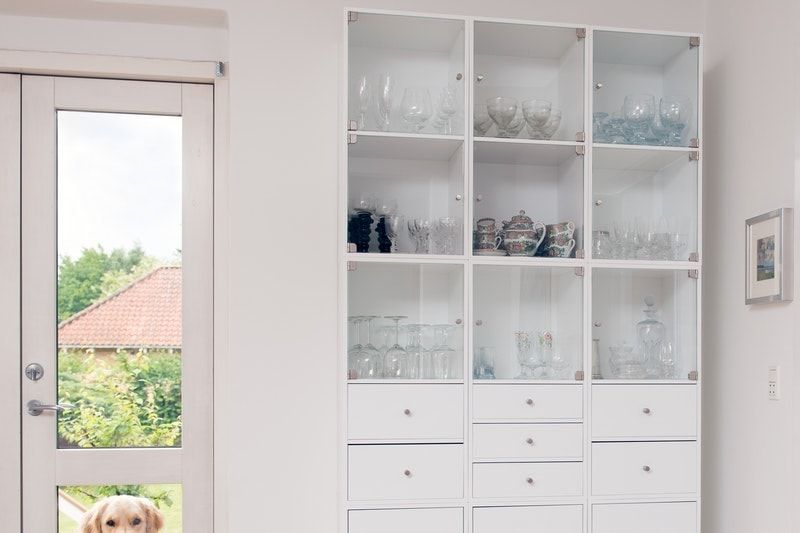
French doors can be a beautiful touch to the interior of your home. However, if they’re in need of a fresh coat of paint, they can get a little tricky. With the extra time and attention needed, more cash will be needed to cover the costs.
French doors are especially challenging to paint because of their size and glass panelling. Special care is needed to protect the hardware and properly paint the surfaces of the door without getting any paint on the glass. The preparation needed, time spent, attention to detail, and location of your home can really raise the price on these doors.
With all this in mind, the average cost to paint French doors is $500-$1,500 per project. These costs are generated by the length of time spent (8-25 hours), the materials needed, and the actual work required in painting itself.
Should I D.I.Y. paint interior doors?
Making the decision to take on a paint job yourself can be exciting, but it can also be a little scary and intimidating. It might seem like the ultimate solution to saving money, but at what other costs? Here are the pros and cons of D.I.Y. painting your interior doors and trim.
Should I hire a professional to paint my interior doors?
It’s normal to feel hesitant when it comes to hiring a professional painter to come and paint your doors if money is a concern. However, when you find the right match, there’s plenty to gain from hiring a contractor. Here are the pros and cons of hiring a professional to paint your interior doors and trim.
Why are estimates so different?
Getting a quote for a painting project can make the process of hiring a professional a lot more intimidating. If you look into many different options, you’ll likely find that estimates are all over the place. Here are the reasons why that is:
- Attention to detail and preparation will often be considered and worked into the costs by the perspective painters
- The level of experience the professional painters have will result in an estimate being higher or lower
- The quality of paint and primer being used can increase the costs
- The licenses and insurance held by the painters might result in higher costs
Pro Tip
Make sure to ask any potential painters for specific details into what you’re paying for. Good painters will allow you to see everything in detail so you know exactly where your money is going.
Now that you have the facts, it’s time to decide how much you’re willing to spend on painting your doors and trim. If you decide on the professional route, the City Painters are here for you. Contact us here or give us a call to get a quote for your project!
